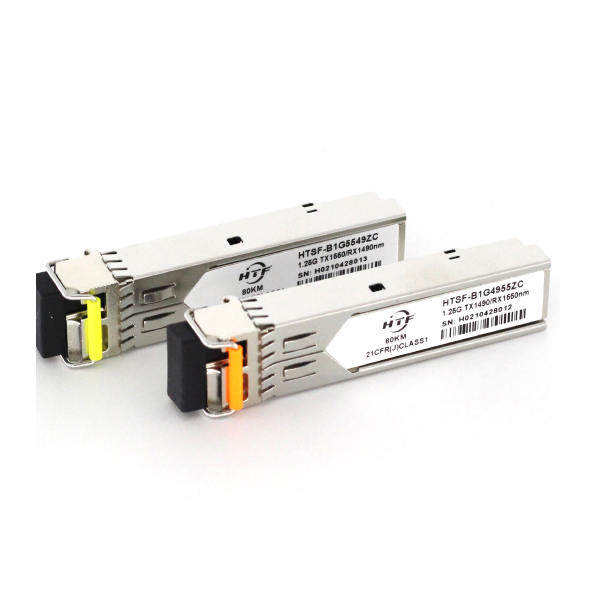The integrated optical transceiver module is composed of optoelectronic devices, functional circuits and optical interfaces. The optoelectronic devices include two parts: transmitting and receiving. The integrated optical transceiver module is the core device of optical communication, which completes the optical-electrical/electrical-optical conversion of optical signals. It consists of two parts: the receiving part and the transmitting part. The receiving part realizes the photo-electric conversion, and the transmitting part realizes the electric-optic conversion.
What is the working principle of
BIDI single fiber bidirectional optical module? BIDI single-fiber bidirectional optical module needs to transmit and receive optical signals in two directions at the same time. It needs to use different optical wavelengths in the sending and receiving directions, but there is only one port, which is filtered by the filter in the optical module, and the transmission of one wavelength optical signal is completed at the same time. and reception of an optical signal at another wavelength, or vice versa. For example, the local end transmits an optical signal of 1310 nm and receives an optical signal of 1550 nm at the same time. The wavelength used by the peer end is just opposite to that of the local end, that is, it transmits an optical signal of 1550 nm and receives an optical signal of 1310 nm.

Therefore the module must be used in pairs at both ends of the link. The commonly used wavelengths of single-fiber bidirectional optical modules are 1310 nm/1490 nm, 1510 nm/1590 nm unidirectional bidirectional transceiver components are MQW-TO-LD light source, TO-PIN-TIA (transimpedance amplifier) detector, beam splitter , optical fiber and other components are all integrated and assembled by coaxial coupling process. Single-fiber bidirectional is a technology that uses BOSA components to achieve integrated transceiver functions.
That is, this type of module integrates the receiving function and the sending function to realize two-way transmission. Why choose BiDi optical module? The most obvious advantage of BiDi optical modules, such as SFP+ BiDi optical modules or SFP BiDi optical modules, is that it can reduce the number of ports on the optical fiber patch cord panel, save the cost of optical fiber cabling infrastructure, and can also reduce the wiring space, which helps the fiber management and reduces the number of fibers required. The price of BiDi optical modules (WDM optical modules) is higher than that of traditional dual-fiber bidirectional optical modules, but the number of optical fibers required by
BiDi optical modules per unit transmission distance is reduced by half.
For many network lines, the cost savings of using fewer fibers far outweigh the cost of purchasing BiDi optical modules. Where are BiDi single-fiber bidirectional optical modules used? Single-fiber bidirectional is usually used for user access network to complete image, data, voice and other communication at low cost.

